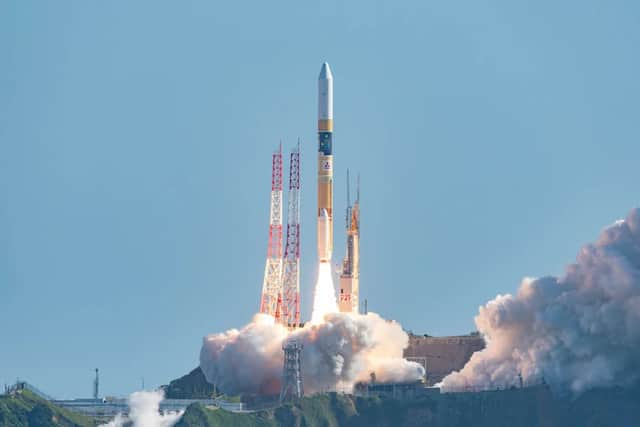Jaxa: Japan launches historic 'Moon Sniper' and Slim probe on precision landing mission
and live on Freeview channel 276
Japan hopes to be the fifth nation to soft land on the Moon after it launched a historic "high precision landing” spacecraft.
The country's "Moon Sniper" mission launched early on Thursday (7 September) morning, at 8:42am Japanese Standard time, on its H-IIA Launch rocket from the Tanegashima Space Center.
Advertisement
Hide AdAdvertisement
Hide AdJapan’s space agency Jaxa confirmed the rocket flew as planned, and the spacecraft carrying two payloads successfully separated from the launch vehicle, one at about 14 minutes after launch and the other at 47 minutes after lift-off.


The first payload, known as the Smart Lander for Investigating Moon (Slim) got its Sniper nickname because it is designed to land within 100 metres of a specific target on the surface – much less than the usual range of several kilometres.
The other payload is a satellite named XRISM and dubbed the “Moon Sniper”, is a joint mission by Jaxa and Nasa, with some contributions by the European Space Agency to reveal the universe in X-rays.
It aims to study extended objects in the universe such as galaxy clusters and supernova remnants.
Advertisement
Hide AdAdvertisement
Hide AdXRISM will “elucidate the processes of matter circulation and energy transport in the high-temperature regions of the universe, as well as the evolution of astronomical objects,” the space agency said.
Before the launch, Jaxa said: “By creating the Slim lander, humans will make a qualitative shift towards being able to land where we want and not just where it is easy to land."
“By achieving this, it will become possible to land on planets even more resource-scarce than the moon.”
The spacecraft is expected to start its landing manoeuvres by February after following a long, fuel-efficient trajectory.
Advertisement
Hide AdAdvertisement
Hide AdOnly the United States, Russia, China and as of last month India have successfully landed a probe on the moon. There have been two failed Japanese missions – one public and one private.
The Japanese start-up, ispace, failed in an ambitious attempt to become the first private company to land on the Moon in April. It lost communication with its craft after what it described as a “hard landing”.
Japan has had problems with its launch rockets, with failures after the liftoff of the next-generation H3 in March and the normally reliable solid-fuel Epsilon in October 2022. In July, the test of an Epsilon S rocket, an improved version of the Epsilon, ended in an explosion 50 seconds after ignition.
Comment Guidelines
National World encourages reader discussion on our stories. User feedback, insights and back-and-forth exchanges add a rich layer of context to reporting. Please review our Community Guidelines before commenting.
